This is not just a game; it is a vote of no confidence in traditional wealth accumulation methods.
Author: Cumberland Labs
Compiled by: Deep Tide TechFlow

After weeks of observing on Discord, diving into Telegram groups, browsing Twitter, and communicating with several research analysts and traders, I have gained a comprehensive understanding of how various groups, from high-level algorithmic traders to my wife's brother, view Meme coins. My investigation covered a wide range, from how to improve the user interface/user experience of limit orders and complex order execution to asking friends if they think Moo Deng is cute or if they have heard of Peanut Squirrel.
Content in the image:
I use Solana every day, from the old Telegram bots to trading interfaces like Photon or Bullx; I have used almost all tools. There are basically four or five major players in this field, and I hope other blockchains can draw inspiration from them. The main difference lies in how the devices are used (trading interfaces are usually used on PCs, while Telegram bots are faster on mobile devices, making it easier to react quickly when someone mentions a coin in a group). In multi-chain trading, there are significant user experience issues with trading interfaces (Azura is working to address this but is still in the early stages), and certain settings need further abstraction. For example, you can set all parameters, such as bribe fees, priority fees, etc., but I wish these could be handled automatically (only manually adjusted when necessary), which is particularly important during the current phase of chain congestion and unstable fees.
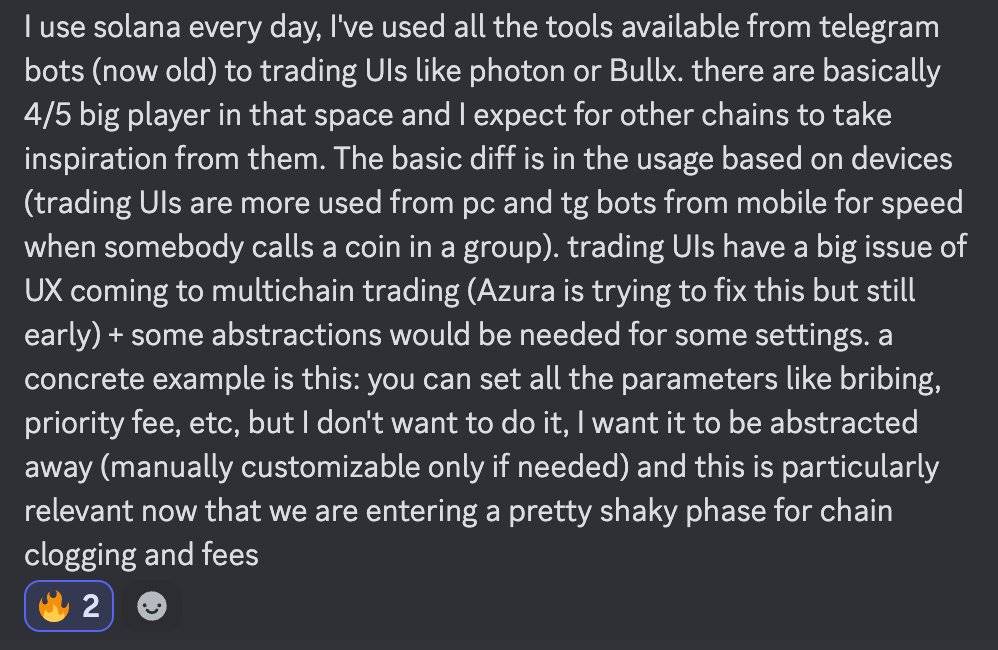
Survey from Discord
What you are about to read is a summary of field research that combines publicly available data in the field and anonymous feedback on the topic. At Cumberland Labs, we believe this story is compelling and will continue to influence the market in the coming years. While it may seem simple or even childish on the surface, it actually represents a shift in user behavior that will channel billions of dollars of idle funds into the blockchain, whether traders realize it or not.

Survey from my wife
What are Meme Coins?
The evolution of Meme coins began with DOGE as a Bitcoin imitation that attracted the attention of Elon Musk, followed by SHIB and PEPE igniting the public's imagination, to the current phenomenon of fair issuance based on Solana—this market is constantly innovating itself.

@elonmusk's first tweet about Doge
Today, Solana leads the field, driving 89% of new token issuances. Just last week, 181,000 new tokens appeared on decentralized exchanges (DEXs). This is not just a matter of quantity; it is about accessibility. Platforms like pump.fun allow anyone to participate in token issuance, yet the success rate reveals an important reality: less than 2% of tokens can list on Raydium, and only 0.0045% of tokens can maintain a market cap of over one million dollars.
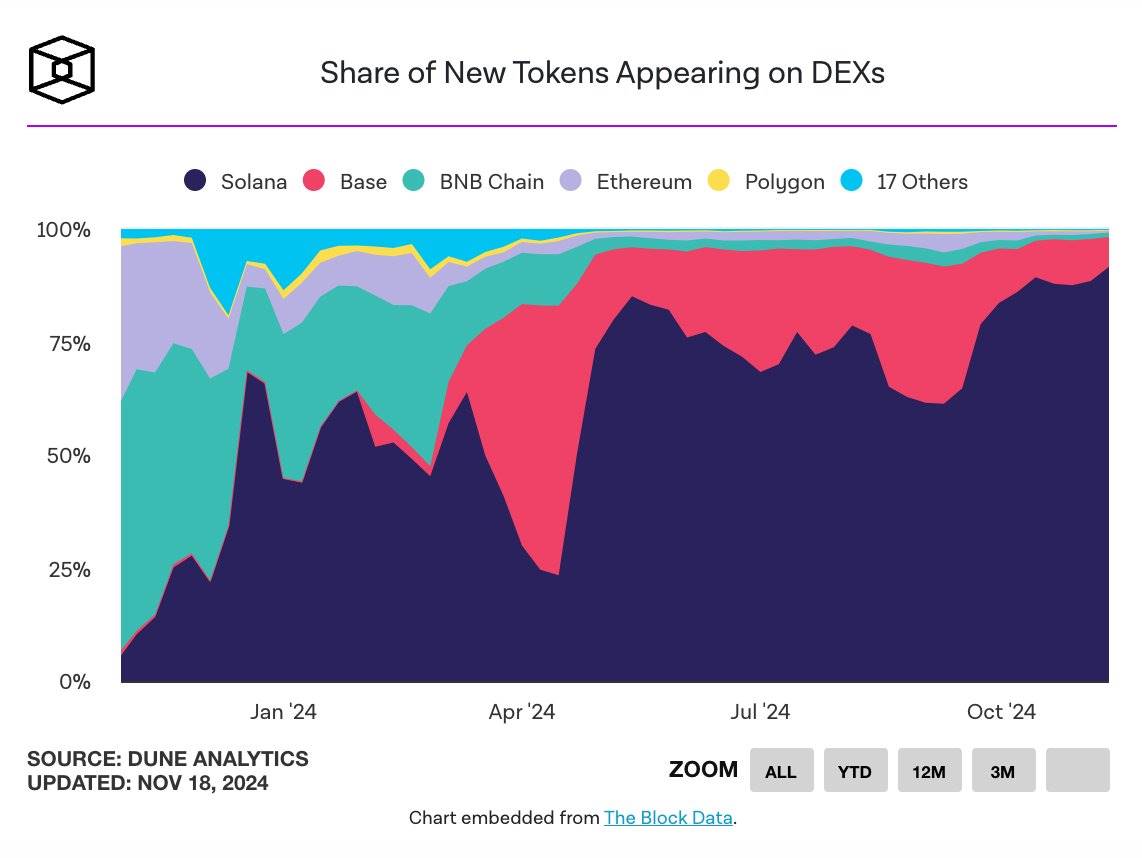
Source: @TheBlock__
So, what distinguishes Meme coins from "shitcoins"? The key lies in their successful characteristics:
From DOGE to Moo Deng, the most successful tokens share common traits: a strong meme effect, attention-grabbing catalysts, and active community engagement. DOGE capitalized on Elon Musk's attention and first-mover advantage, while Moo Deng sparked people's imagination through viral social media. But most importantly, they built communities that could transform ordinary viewers into passionate supporters.
Data Doesn't Lie
The recent growth of Meme coins is by no means a flash in the pan. According to research from Binance Research, since 2022, the market cap share of Meme coins in the non-BTC/ETH/stablecoin market has increased from 4% to 11%, nearly tripling in a competitive market.
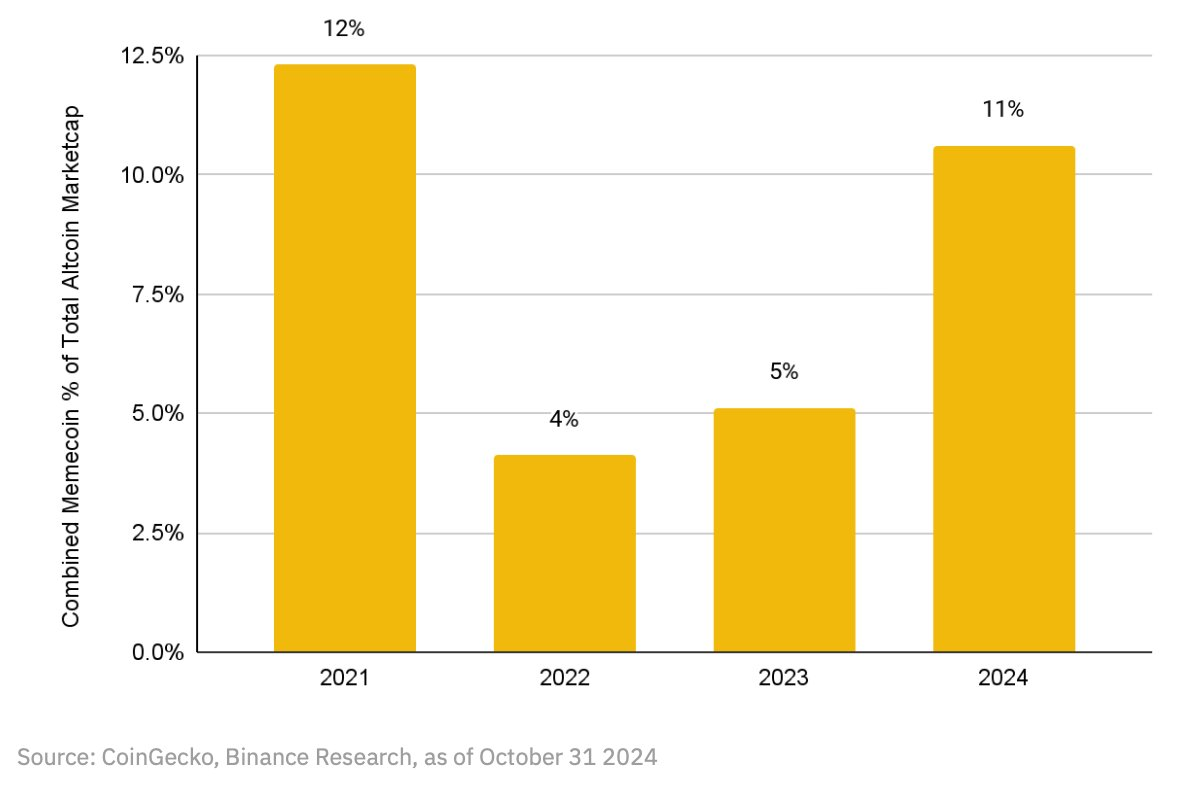
Source: @BinanceResearch
Millennials and Gen Z now account for 94% of digital asset purchasers. This is not just a demographic coincidence but a response from an entire generation to their environment. They are not just buying tokens; they are rejecting the traditional financial security path taken by their parents. Meme coins may seem like a joke on the surface, but for these traders, they represent a tangible opportunity to earn outside the traditional system.
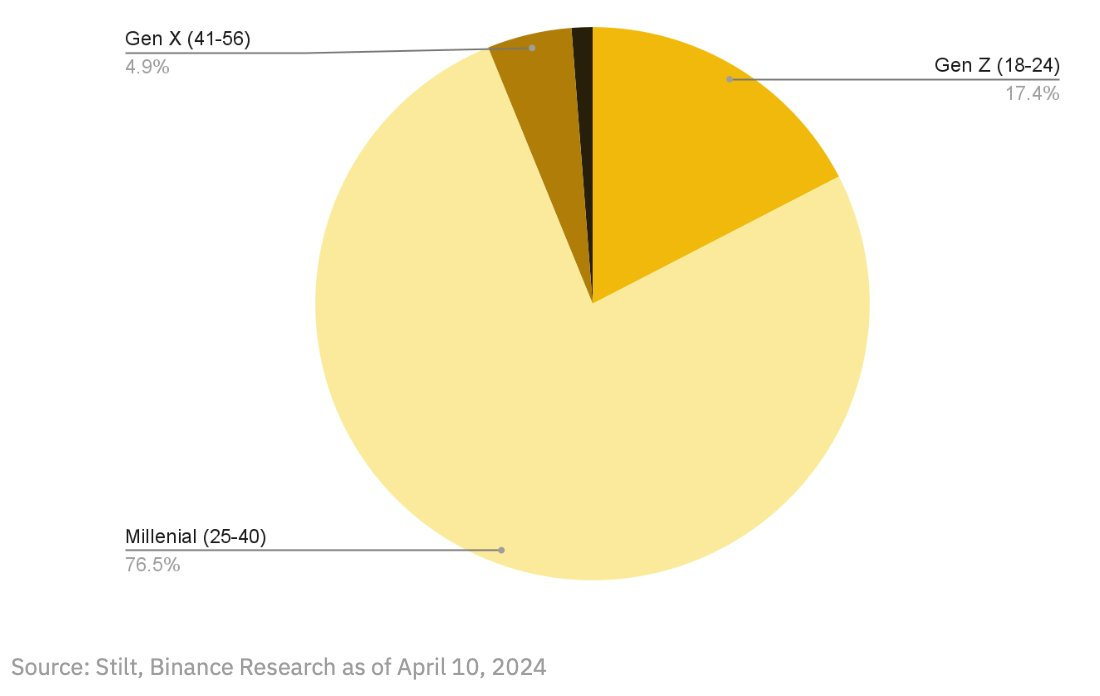
Source: @BinanceResearch
Andrew Edgecliffe-Johnson best summarized this: "If people lose faith in slowly getting rich, it's hard to blame them for wanting to get rich quickly." This confidence has been declining for years. In 1963, buying a house required an average of 4.4 years of salary, while now it takes 8.1 years. Coupled with the surge in inflation in recent years, with an inflation rate of 7% in 2021, it explains why the younger generation is seeking financial opportunities elsewhere.
This movement is not just about making quick money (though that is indeed a component). It is more about using funds as a protest against the traditional system that has lost trust. The Meme coin phenomenon is high-risk, high-reward—this characteristic deeply attracts today's traders. This is not just a game; it is a vote of no confidence in traditional wealth accumulation methods.
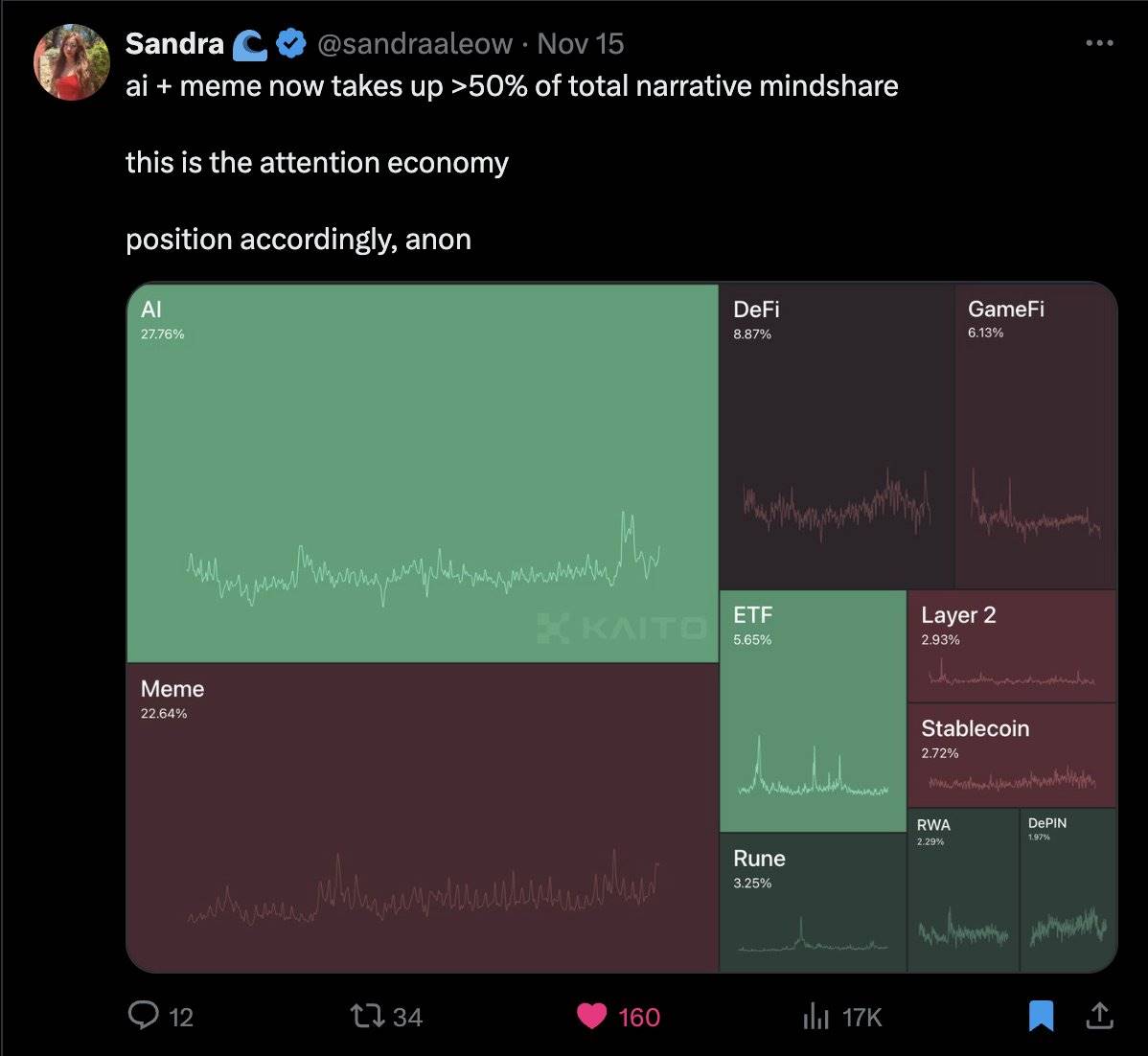
Exploring the Meme Coin Phenomenon
The rapid evolution of this market is astonishing. Research shows that $BOME reached a billion-dollar market cap in just two days, $PNUT took 14 days, $WIF took 104 days, $SHIB took 279 days, while $DOGE took a full eight years. Attracting and retaining traders' attention is key to success.
On X, screenshots of Phantom wallets show returns as high as 633 times and +10,520%, highlighting a larger theme: accessibility and fairness have become central. During the ICO boom in 2017, widespread participation was key—no private rounds, no venture capital allocations, and no complex vesting schedules.
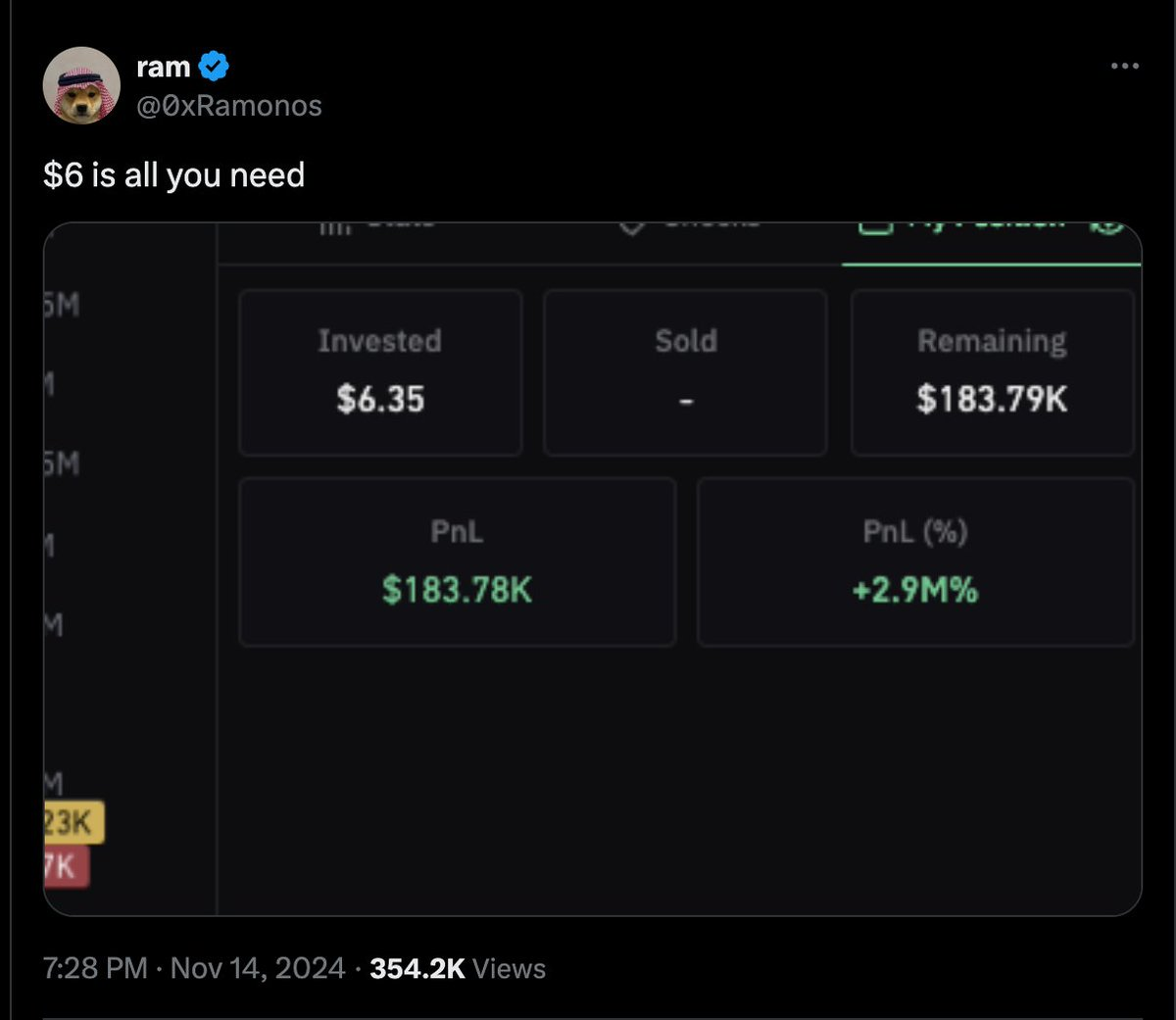
Today's Meme coin traders are pushing back against what is referred to in modern token issuance as "VC exit liquidity simulators." Some new Meme coins have no team allocations and are priced by the market, reminiscent of the fair competitive environment of the early cryptocurrency era, where community and network effects were key to success.

When viewing the Meme coin craze as an opportunity for fair competition, it becomes more understandable, as there is no need to worry about venture capital allocations and token unlocks. People are tired of being used as exit liquidity, and fair issuance platforms like pump.fun allow anyone to easily issue coins and participate.
Breaking Gravity—The Secret to 100x Returns
What distinguishes successful projects from the many failed ones? The data is shocking—less than 2% of tokens can enter Raydium from pump.fun, and only a tiny fraction, 0.0045%, can maintain a market cap of over one million dollars. However, some tokens have indeed achieved what is known as "escape velocity," successfully breaking free from obscurity.
Successful Meme coins often follow observable patterns. The most successful tokens typically excel in at least one of seven key areas: meme potential, attention-grabbing catalysts, novelty, humor, community, distribution, and development. Observing any successful Meme coin, you will find these factors at play, with attention-grabbing catalysts, meme potential, community, and distribution being the most critical.
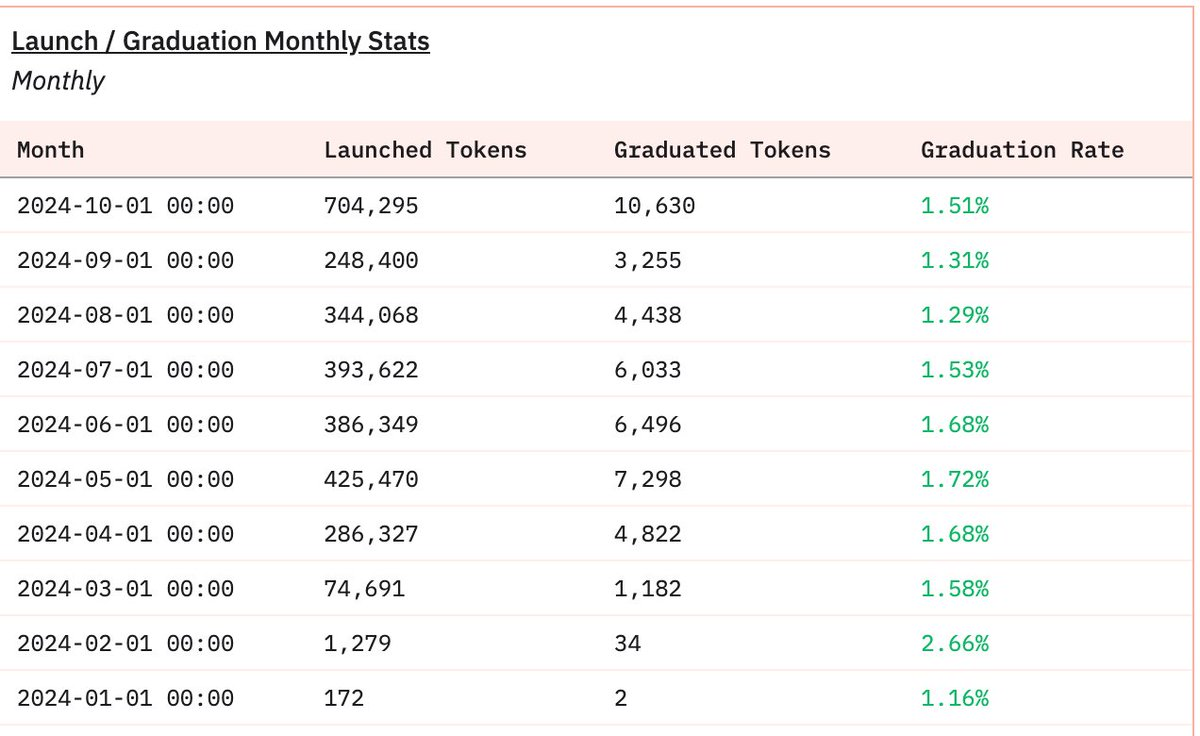
Source: dune
Take Moo Deng as an example—its success is no accident. The project garnered attention through social media platforms like Twitter, Telegram, and TikTok. Its cute and easy-to-understand character appeared repeatedly in posts, creating a viral recognition and sharing loop. While it may not be particularly humorous, its strong attention catalysts and distribution strategy generated momentum.
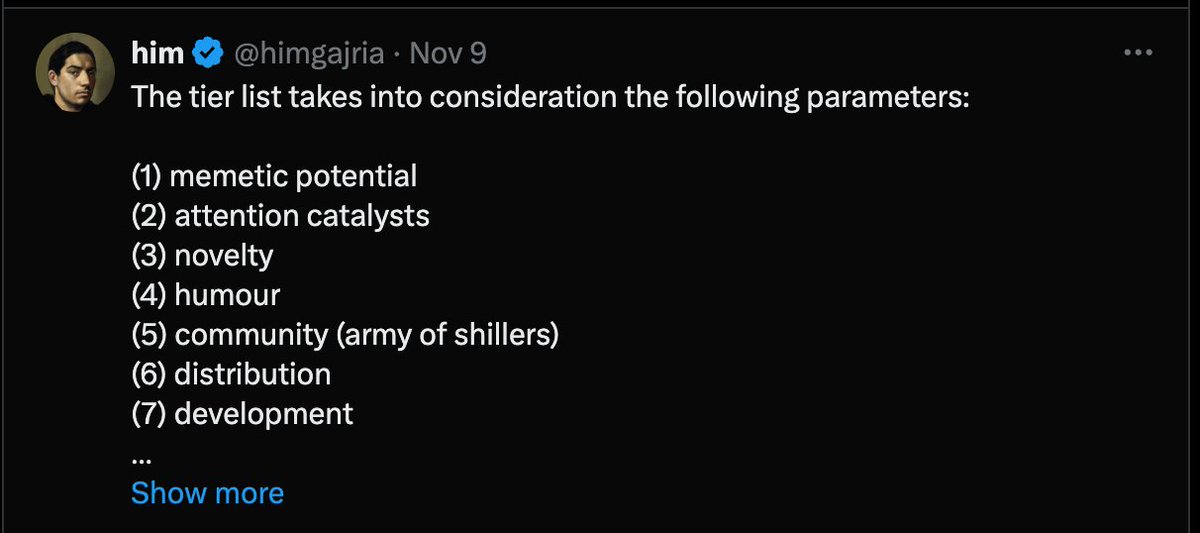
Solana played a crucial role in this process. The network currently supports 89% of new token issuances, handling approximately 41 million non-voting transactions. Solana's dominance is not coincidental—its low fees and fast transaction speeds allow for rapid experimentation, even if many experiments ultimately fail.
Current Market Landscape: Data Analysis
Data provides us with valuable insights into how traders interact with different Meme coin platforms and reveals key gaps in the market.
First, it is noteworthy that about 60% of users still visit DexScreener after using their preferred trading terminal. They leverage DexScreener's insights, advanced filters, and analytical tools, indicating that existing platforms have not fully met their needs. However, only 10-12% of DexScreener users ultimately use trading and execution terminals, even though these terminals offer better customization and parameter settings than DexScreener's interface. This reflects a gap in user satisfaction—despite trading terminals having better features, they are still underutilized.
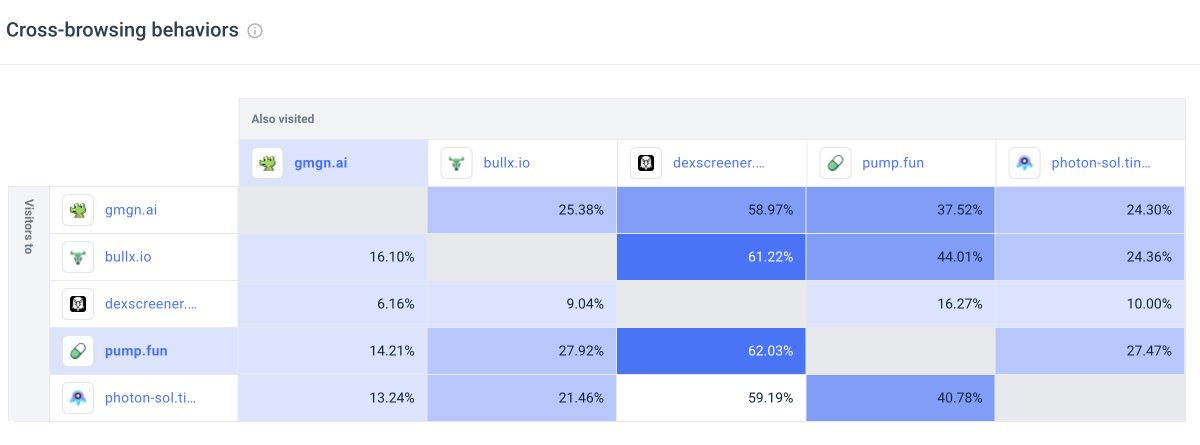
Source: SimilarWeb
In the comparison of mobile and desktop usage, Photon stands out. Among the three major trading terminals—gmgn.ai, BullX, and Photon—Photon has the highest mobile usage rate, while BullX has the most desktop users. Despite BullX having a large desktop user base, a significant portion of its traffic comes from Telegram links. This indicates that even when distributed through mobile-first platforms like Telegram, users ultimately use BullX on desktop. This reflects the complexity of these terminals and suggests that users prefer to operate them in an environment where they can manage all functions comprehensively.

Source: SimilarWeb
This trend reveals a broader issue: existing trading terminals are overly complex. Their dominance on desktop shows that they are inconvenient to use on mobile devices, leaving a significant gap in the market for a trading terminal that can operate seamlessly across various devices. Traders want powerful tools that are easy to use on mobile and can switch to a simplified interface when needed. The market urgently needs an integrated solution—an intuitive platform that combines advanced features and ease of use, regardless of whether users are on desktop or mobile.
The current fragmented experience is both inefficient and inconvenient. Traders have to switch between multiple platforms to obtain the insights they need and execute trades effectively. A unified solution that provides depth and functionality while having an adaptive interface on mobile would greatly enhance the trading experience.
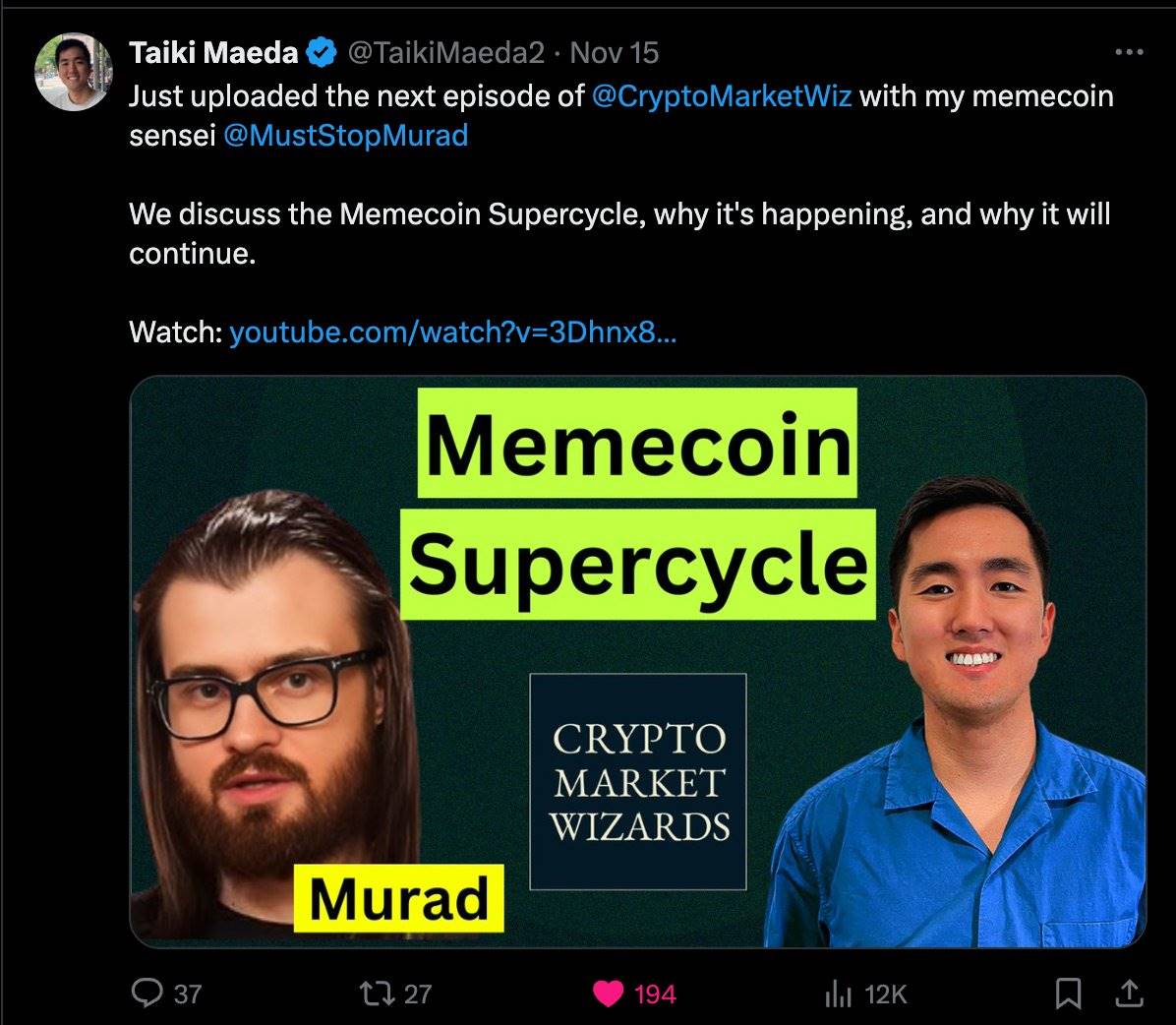
In-Depth Exploration: Trader Perspectives
After communicating with traders, it was found that they generally desire simple yet powerful tools. "When the network load is high, I still need to set priority fees and extra fees," one trader said. "I wish there were smart defaults that could run automatically but allow me to adjust when needed."
This recurring demand for a balance between simplicity and control is evident. Current platforms are either overly simplified or completely offload complexity onto users. There is no middle ground that provides depth while being ready to use out of the box.
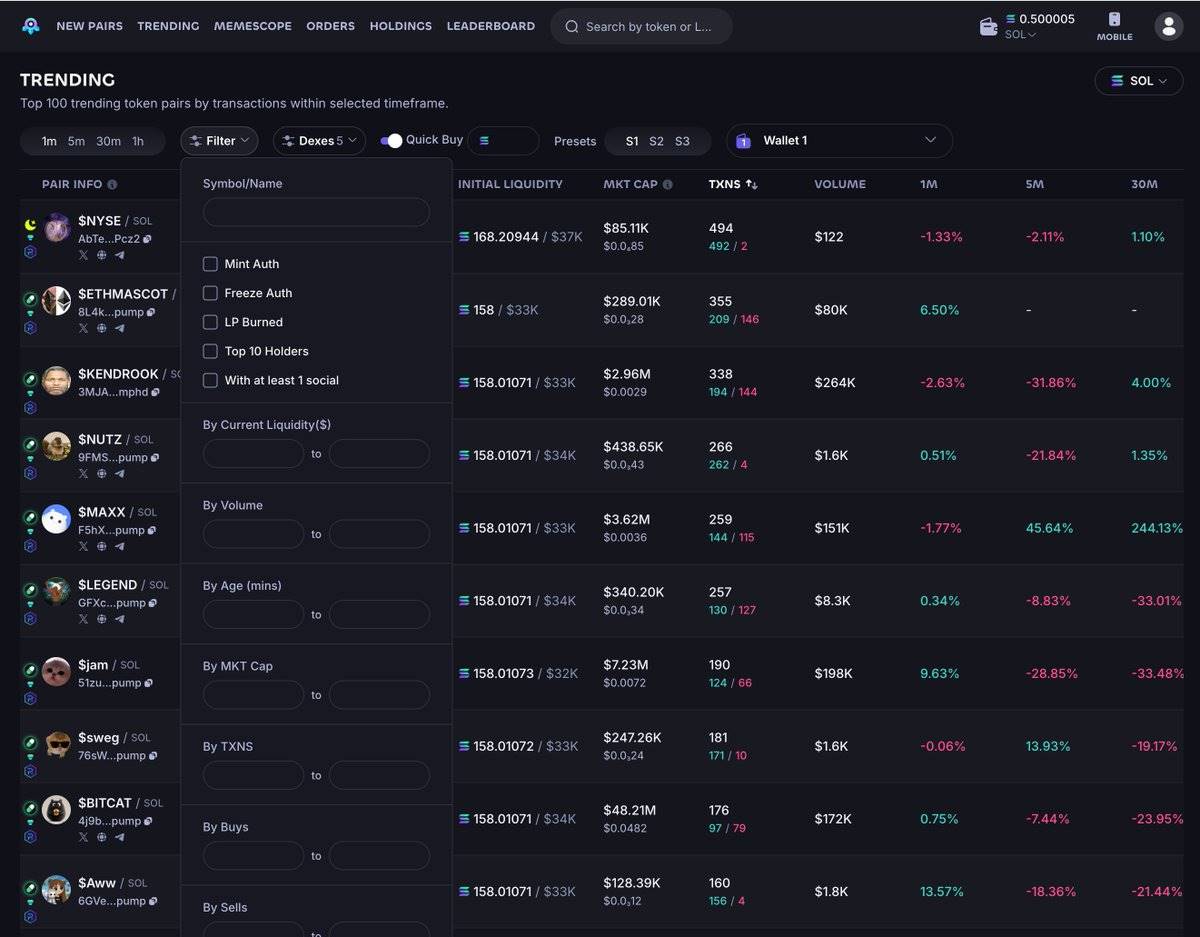
"An integrated interface would be great if it could consolidate exchanges, charts, and recent transaction history, reducing clicks and keeping all important information in one place," said a large trader. Another mentioned spending a lot of time teaching the team basic concepts, such as how to optimize trading fees—time that could have been spent on actual trading.
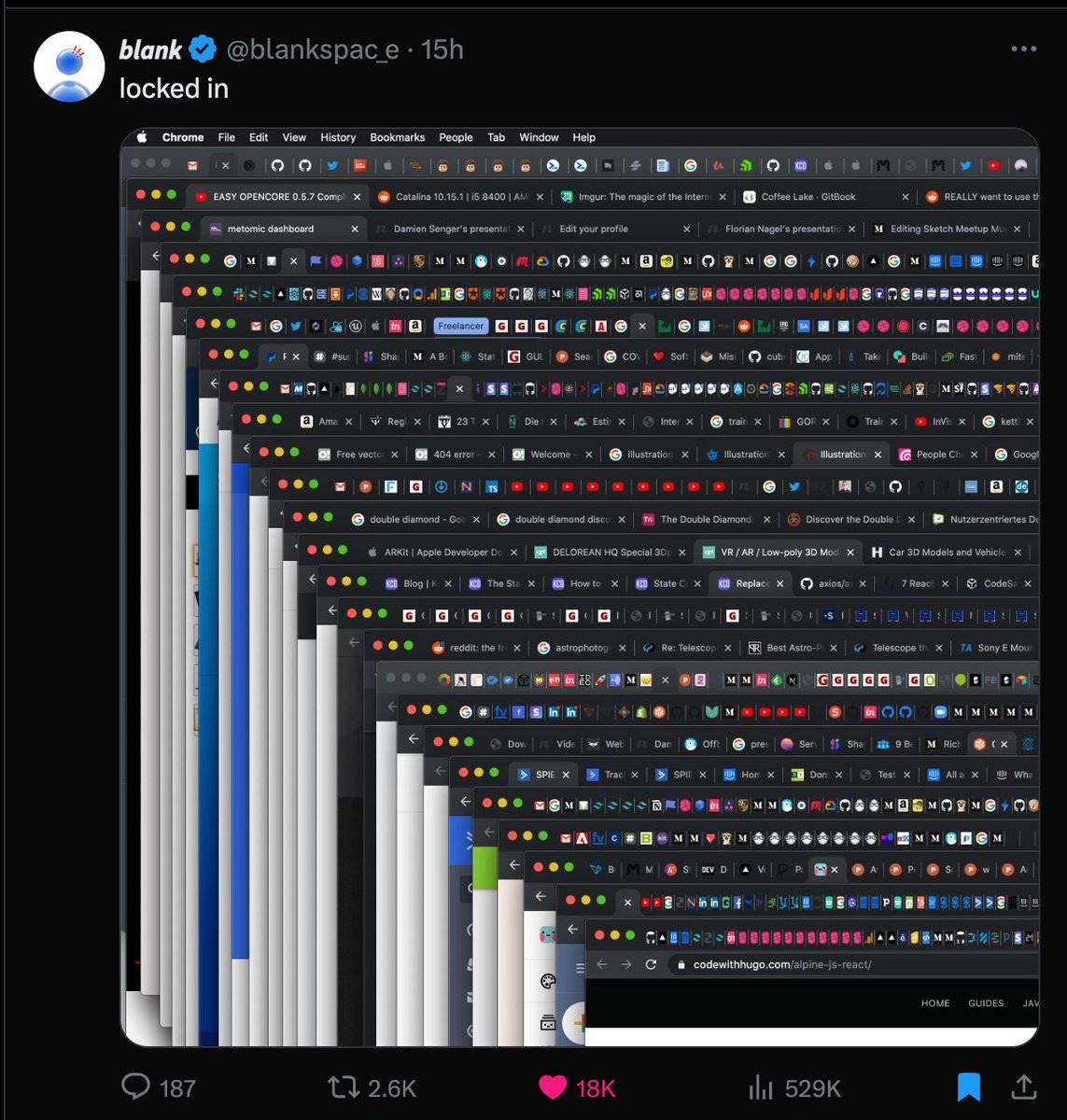
Limit orders are a recurring point of complaint. "While orders are executed, all the positive slippage gains are eaten up by the platform," one trader pointed out. Another mentioned that limit orders on one platform seem to always get filled faster than on others, leading to an unfair competitive environment that everyone finds confusing.
Market Structure: The Real Challenges Faced
Current trading platforms are primarily designed for crypto veterans and on-chain traders familiar with terms like "slippage tolerance," "priority fees," and "bribes." However, most traders only care about how much they need to pay and whether the trade can be executed smoothly. A trader managing over 100 wallets stated that he can no longer effectively track his positions.
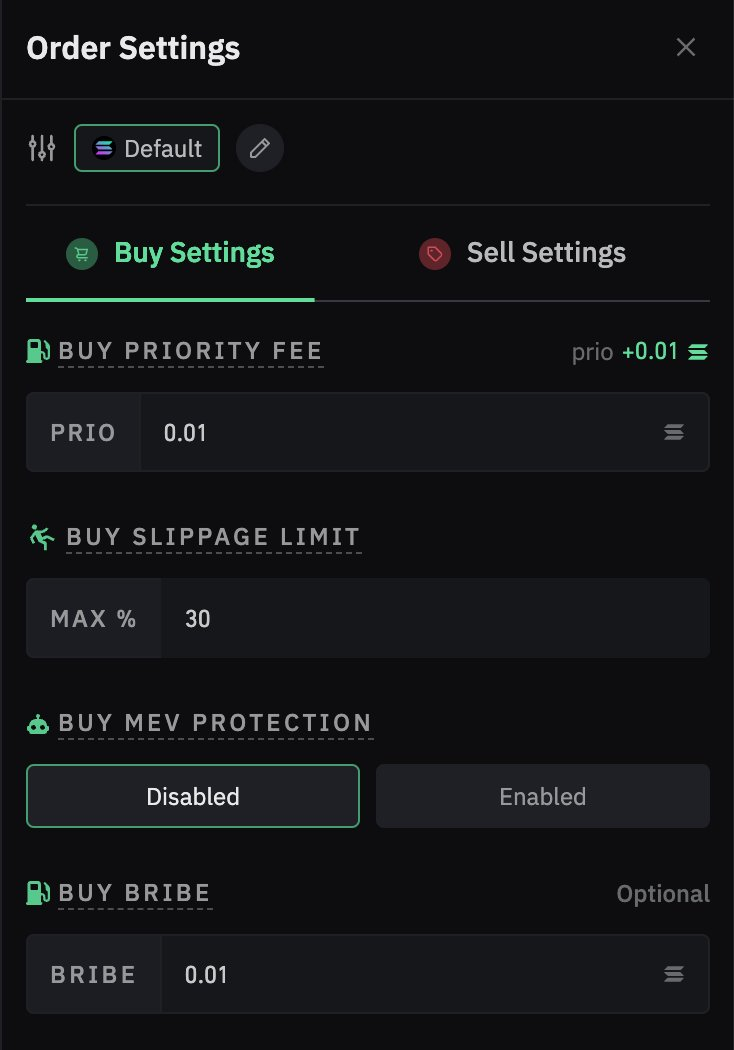
The mobile experience is even worse. While Telegram bots somewhat compensate for some shortcomings, they are not a long-term solution. These are merely temporary fixes for a system that needs a complete redesign.
This fragmented state incurs real costs. Traders frequently switch between different platforms, missing opportunities due to failed trades and suffering losses due to poor execution. The existing ecosystem forces users to make difficult choices between expensive tools and poor performance, with no middle-ground options.
Building Solutions: Beyond Temporary Fixes
The current Meme coin trading environment resembles a patchwork of temporary solutions that, while temporarily meeting user needs, clearly has significant room for improvement. When traders express, "If only there were tools to customize LP strategies," or complain about "having to adjust priorities and bribes when fees are high," or wish for better execution on stop-loss and take-profit order strategies, they are pointing to a fundamental issue: the so-called existing solutions are not real solutions.
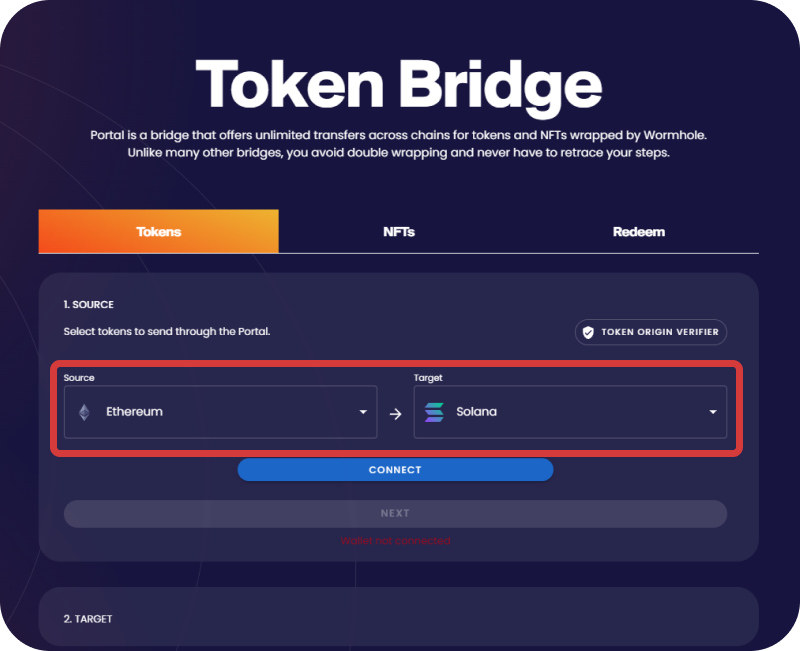
Most platforms seem to be designed for users already familiar with on-chain trading, bridging, and DeFi, making them complex and difficult to understand. However, through discussions with multiple traders, we learned that they want to be able to choose complex features within a non-complex interface. The existing "advanced" user interfaces do not provide the functional parameterization that advanced traders need, while the default interfaces are overly simplistic, overlooking features that could significantly impact profits and losses. For example, some traders want a feature that "automatically informs how much this trade (including gas and fees) will cost to ensure the trade succeeds," which would not only allow advanced users to assess whether the fees are reasonable but also help ordinary users understand the costs they are about to incur.

The solution lies not only in simplifying the interface but in rethinking how traders interact with the market. Some liken Meme coin trading to a "game," and they are actually looking for the added value that a gamified experience brings. They need analytical tools that can display win rates, reasonable performance tracking, and tools that help understand trading patterns.
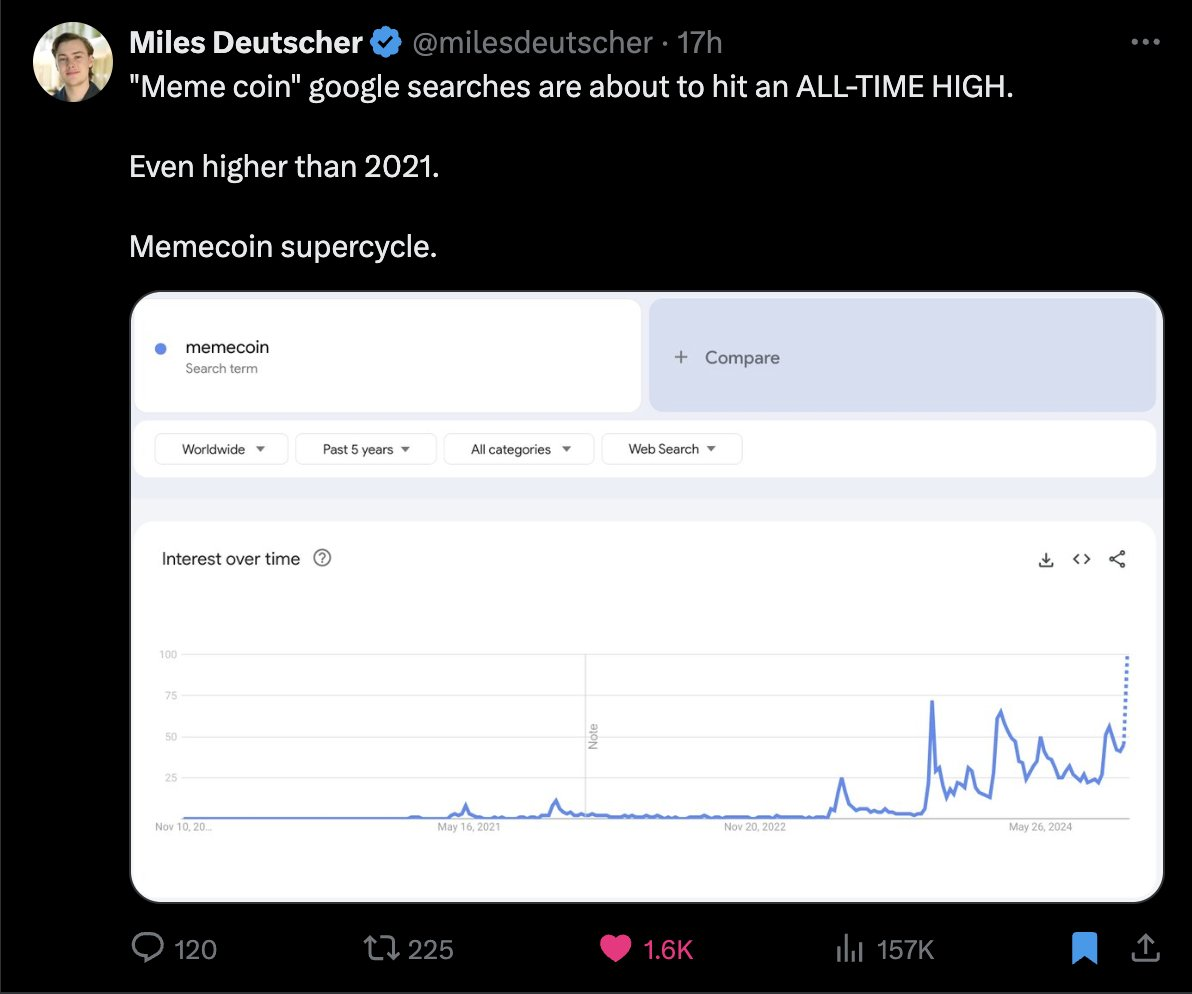
Future Directions: The Vision of Cumberland Labs
We are not looking to develop another trading terminal or launch a new Telegram bot. The opportunity we see is much greater: to create an interface that combines the simplicity of Moonshot with the powerful features of advanced trading terminals. This platform can evolve as users grow, providing them with an easy entry point while meeting the needs of experienced traders for depth and complexity. More ordinary traders mean higher trading volumes, deeper liquidity, and better opportunities for both complex on-chain traders and newcomers to the space.
This means:
Simplifying complexity without cutting features—providing smart defaults while allowing full customization when needed
A unified trading experience that integrates charts, execution, and analysis in one window
Truly effective cross-chain portfolio management
Real-time performance tracking to help traders understand their strategies
Mitigating obvious risks without limiting opportunities
Current platforms have laid a solid foundation for today's crypto veterans and on-chain traders. But the next wave of ordinary traders needs something different—a platform that can start simple and grow with them. They need an intuitive interface that can guide them through the trading process and gradually introduce more complex features as they are ready. The existing "advanced vs. default" user interface settings can be further refined to better meet the needs of different users. This is not a matter of simplification but of creating multiple layers of complexity that allow users to explore at their own pace.
The pace of development in the Meme coin market is faster than ever. Although 75% of Meme coins were created in the past year, we see an opportunity to build tools that can attract newcomers while enhancing the capabilities of seasoned traders.
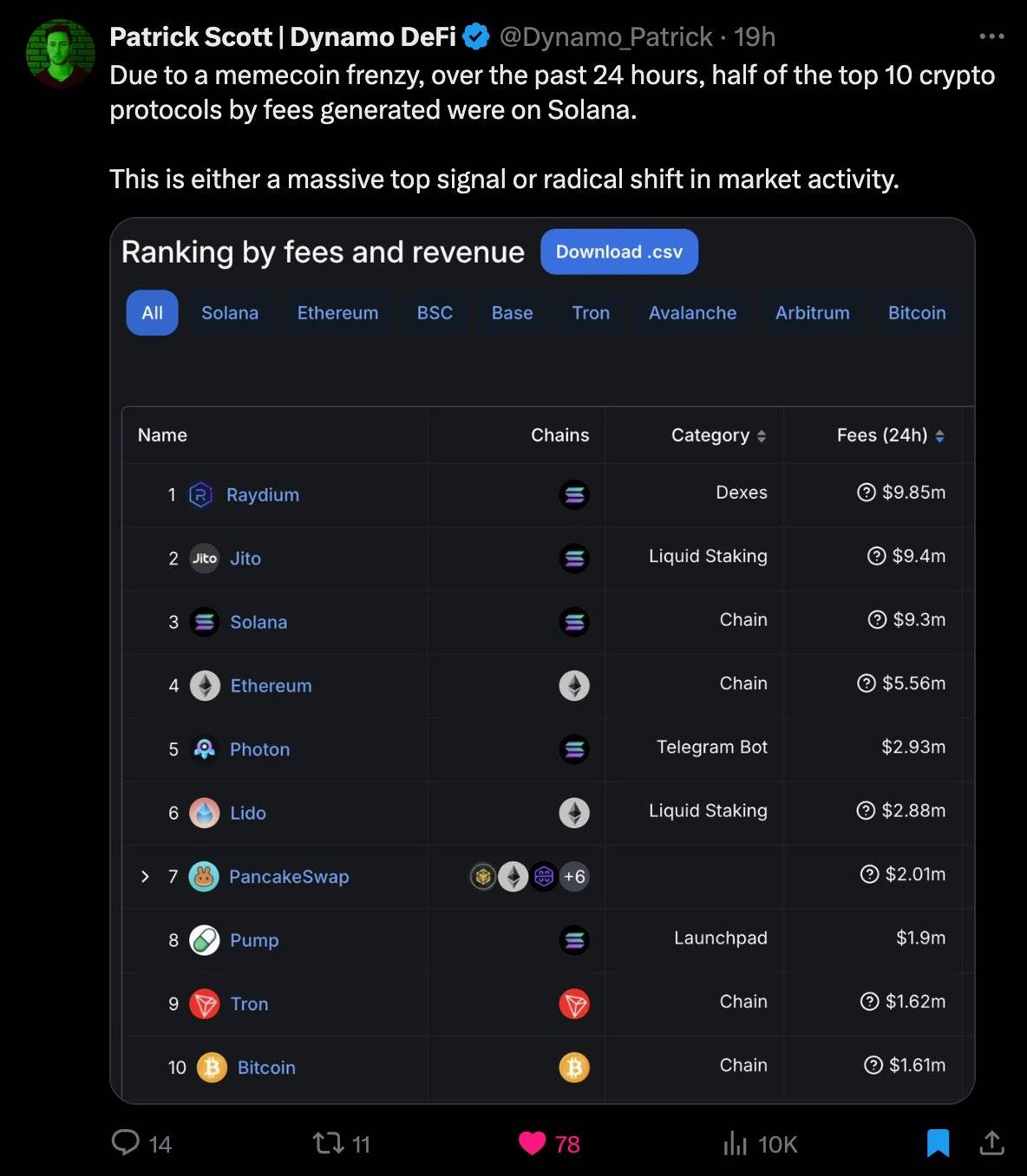
Beyond Trading: The Vision of Building Community
Trading is just one part of the entire ecosystem. Community building, education, and shared experiences are key to driving the development of the Meme coin ecosystem. While existing platforms like Discord and Telegram have achieved a certain level of integration, bringing the community directly into the trading platform is an innovation. Currently, the activity of Telegram bots is higher than that of traditional trading interfaces, one reason being that users can quickly copy contract addresses from Telegram groups to the bot for trading, which is faster than on trading interfaces.
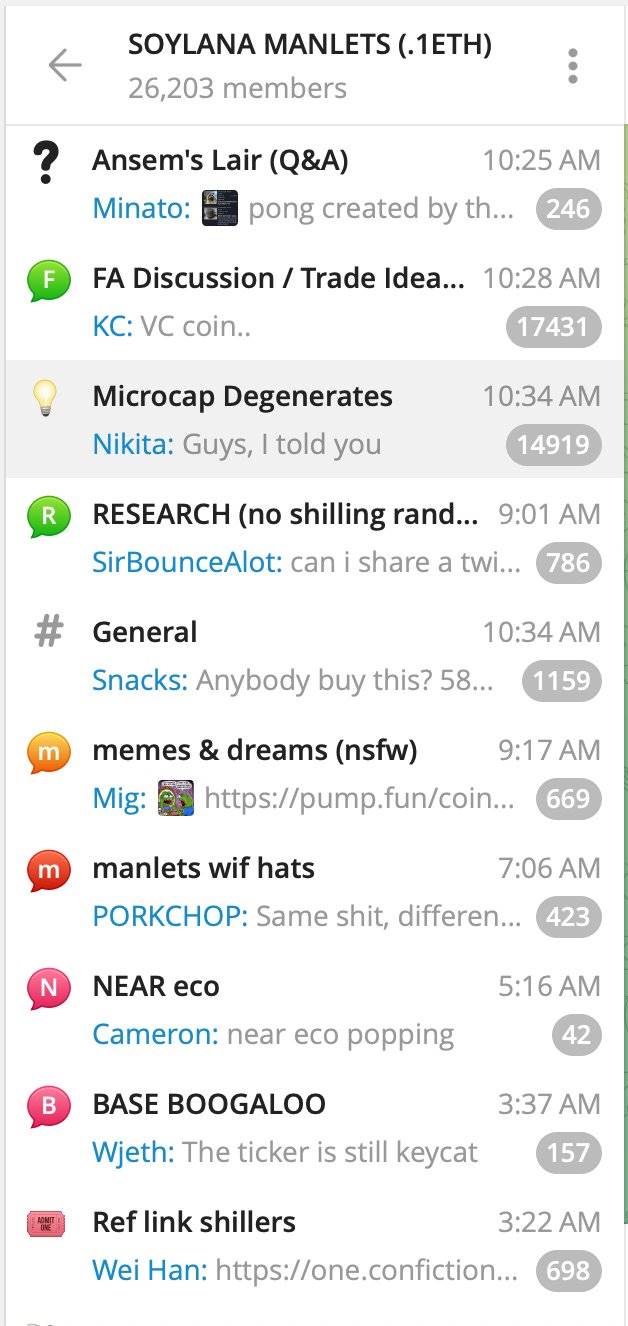
@blknoiz06 Telegram Group
We envision a more integrated approach. Imagine being able to track your progress with other traders, share strategies in real-time, and build a reputation based on actual trading performance. Not just some casual metrics, but deep insights into which strategies work and which do not.
This social aspect is not about creating another echo chamber for cryptocurrencies but about providing context and understanding to help traders make more informed decisions. Whether analyzing how different entry points affect returns, understanding performance patterns before and after migrations, or learning from successful strategies, every feature is designed to improve trading outcomes.
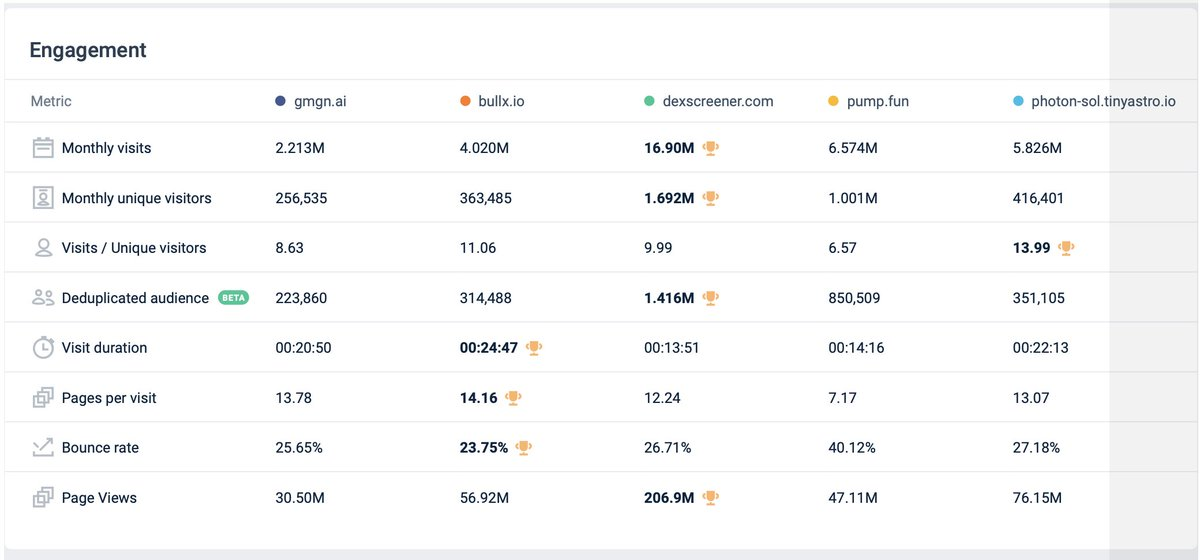
免责声明:本文章仅代表作者个人观点,不代表本平台的立场和观点。本文章仅供信息分享,不构成对任何人的任何投资建议。用户与作者之间的任何争议,与本平台无关。如网页中刊载的文章或图片涉及侵权,请提供相关的权利证明和身份证明发送邮件到support@aicoin.com,本平台相关工作人员将会进行核查。




